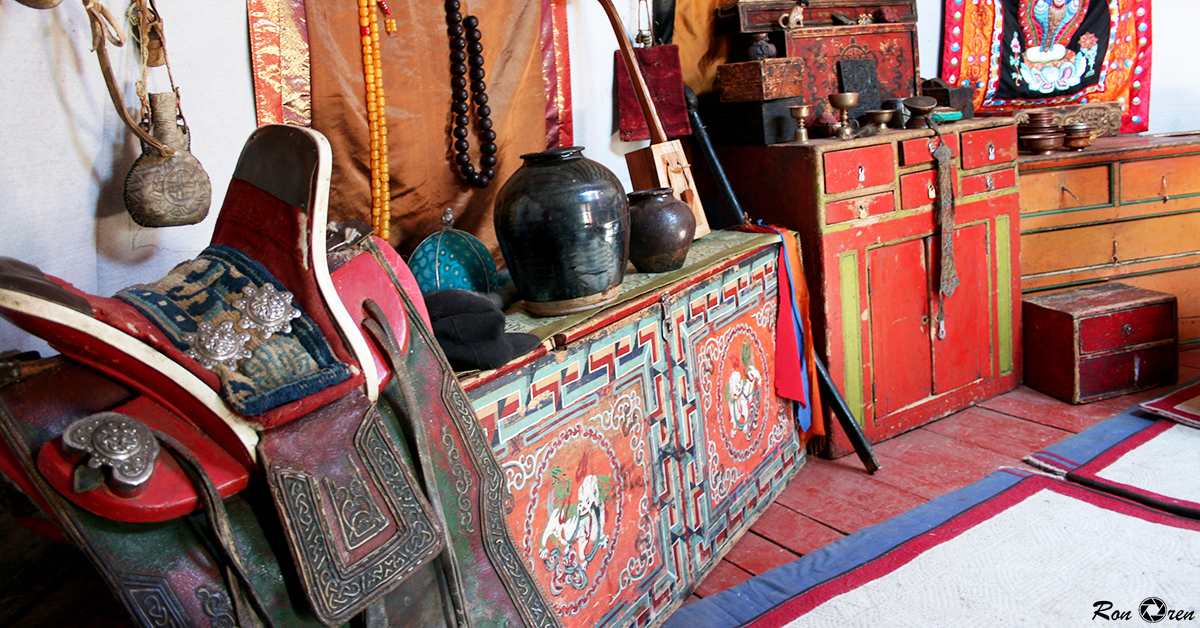Blog
Nomadic Lifestyle: Your Questions Answered
- How do nomads count days?
Every year, a small but very significant book is published before Lunar New Year. This book is a calendar distinguishing the auspicious and inauspicious days of the year by Buddhist astrology. It continues to be used throughout Asia, including nomadic communities, to determine religious festivals, national holidays, and other life events.

The calendar divides a year into 12 months, represented by twelve animals. These animals are also used to count the days, so one week has 12 days instead of seven. You can't find out the exact day of local festivals in Eastern countries before this book is published. You won't even be able to know when the Yuanyang minority market in Yunnan Province would be open without it. Hundreds of millions of Asians rely on this book to make life plans. For example, in a small Muslim village of Yuanyang county, the minority markets only open on the Rooster day, a lucky day for business. Meanwhile, on the auspicious days to get married, you would run into many newlyweds in the central square of Ulaanbaatar in Mongolia. There are even lucky days for opening a business, going on a trip, and getting a haircut.

- How do nomads choose the day to migrate?
When the time to move from one camp to another comes near, the family's father sits down with the same calendar to find an auspicious day to move to a new place. Then he would travel to find a place with enough pasture for the livestock a few days before the seasonal migration. On the day to move, the family will put on their best clothes and get to work. First, they will pack the items of furniture. A nomadic family doesn't possess unnecessary home decorations or items that may break while moving, so packing is not that hard as one would imagine. Then they dismantle the ger, load it onto pack animals and nowadays a truck, and moves to the chosen place.

After arriving at the destination, they assemble their ger and place everything inside in an organized manner. The door always faces south. The kitchen appliances are arranged in the east along with clothing. The west side belongs to the man, so they hang there the saddle, harness, whip, and a bucket of fermented horse milk drink known as airag. Next to it, they may put shimiin arkhi, a distilled alcoholic beverage from yogurt. In the north, they arrange the altar, including various figures of Buddha and other deities they worship. Next to them are the photos of the family members, both dead and alive. You may also see certificates of appreciation the children received from school or the medals the father won in a horse race or wrestling. Next to Buddha sits the small calendar they use to plan their life.

- Is there any privacy inside the ger?
The whole family lives inside a 40-square-meter round ger with no walls to separate them. Here they sleep, cook, eat, bathe, and make children. For Westerners, who greatly value their privacy and personal space, it would be hard to imagine living like that, but it seems only natural for those who grew up that way.

- Do children of nomads go to school? How do they receive medical services?
Mongolia has 21 provinces, which are then divided into various sums. Each provincial capital has a capital city, while every sum has a permanent town serving as an administrative center. In the town, you can find a hospital, police, markets, and school. While the children who live close enough ride horses to school every morning, those who live far stay at a dormitory during the week and return home on the weekend. Others whose home is too far live in the dormitory almost throughout the whole school year. In this case, one of the family members – usually the grandparents – move to the town to look after the child. Although there is a hospital in small towns, there aren't any specialty doctors and efficient laboratories. Thus, if a herder gets a severe illness, they travel to the provincial capitals or the capital Ulaanbaatar, depending on the condition.

- Do postal services reach nomads? If I send them a letter, how will they receive it?
The post office clerks in towns often visit the local restaurants, where drivers often stop to have supper. The clerk asks them where they are heading, and if the destination sounds close enough, she gives them the letter and asks them to deliver it to the recipient. Since a nomadic society depends on mutual support, the drivers wouldn't break the clerk's trust.

Although globalization is drastically changing our daily lives, it hadn't affected the lives of nomads in central Asia as much. People here still have faith in each other and help strangers without a second thought. Their lifestyle will remain as it was centuries ago until the desire to live an easy life overwhelms them with the help of television programs and social media.
HOME & MONASTERY STAY TOUR
A very special way to discover the lifestyle and traditions of the Mongols is to stay a few days with nomadic families. Accompanied by a translator, for a short while you will become a nomadic family member.
View tour